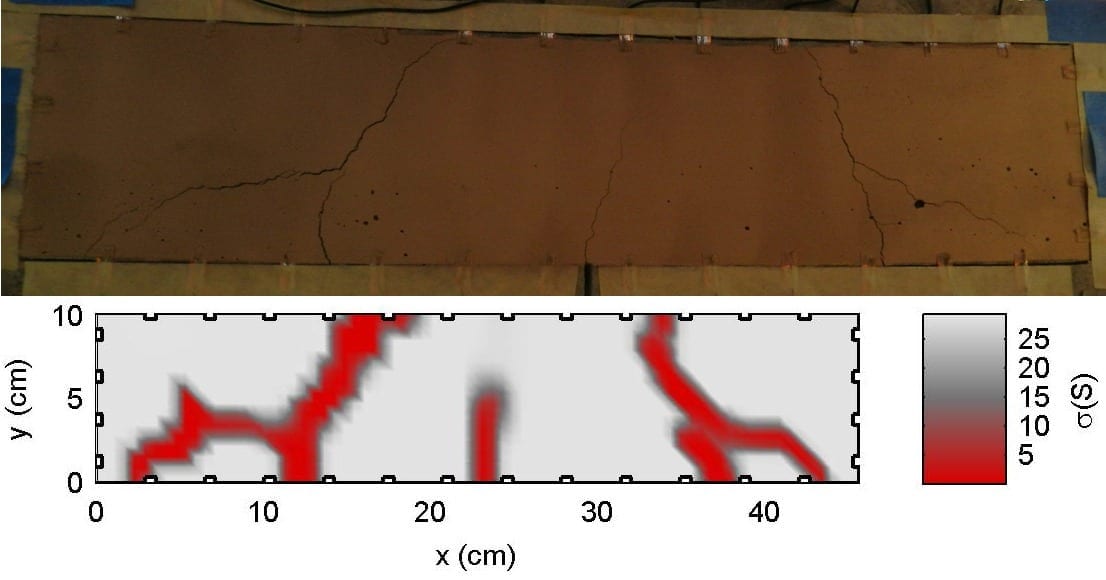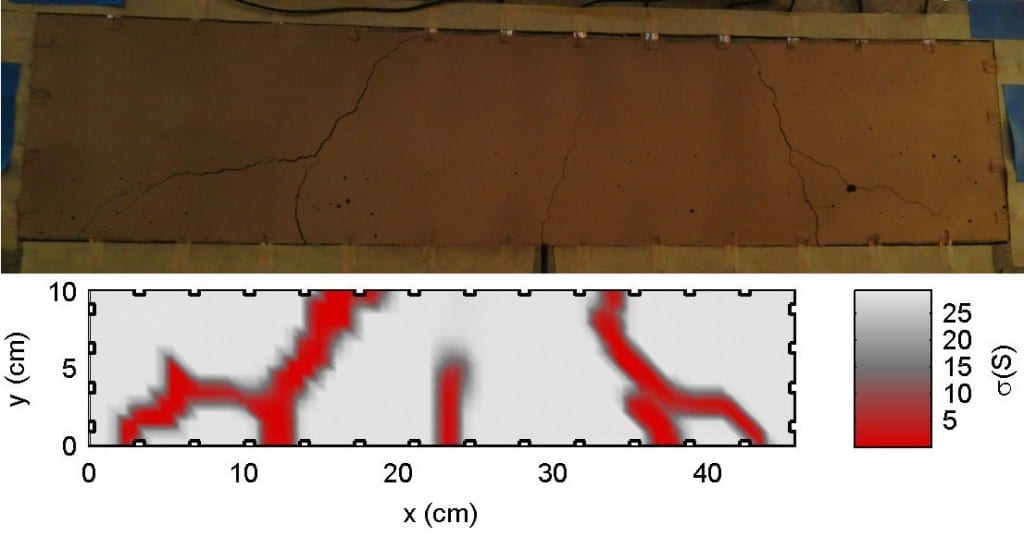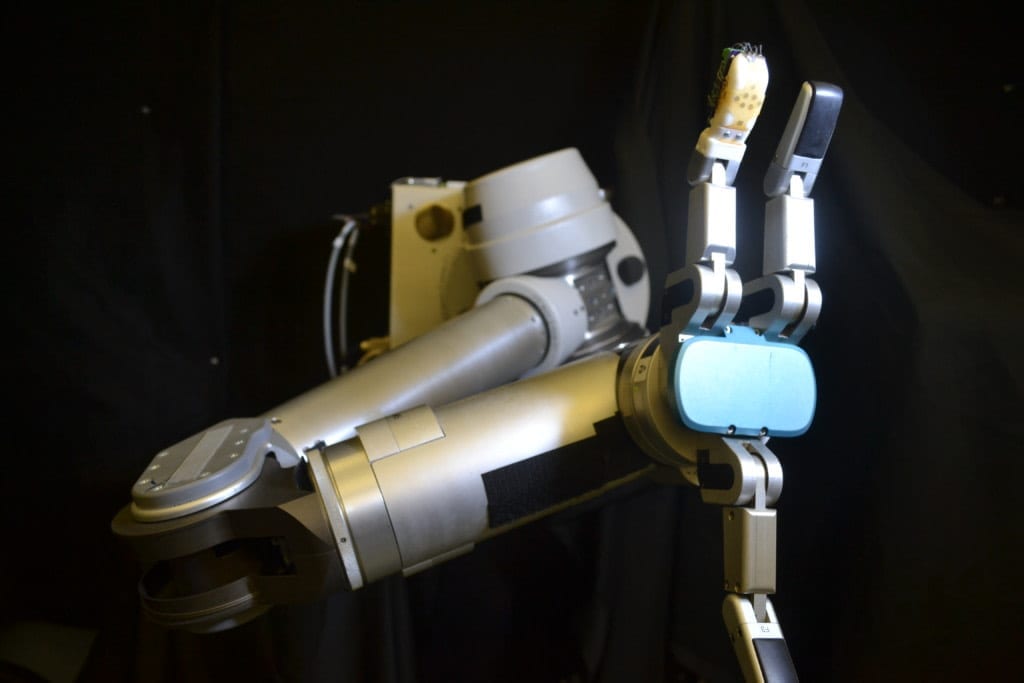Researchers from North Carolina State University and the University of Eastern Finland have developed new “sensing skin” technology designed to serve as an early warning system for concrete structures, allowing authorities to respond quickly to damage in everything from nuclear facilities to bridges.
“The idea is to identify problems quickly so that they can be addressed before they become big problems and – in the case of some critical infrastructure – so that public safety measures can be implemented,” Pour-Ghaz says.
The skin is an electrically conductive coat of paint that can be applied to new or existing structures. The paint can incorporate any number of conductive materials, such as copper, making it relatively inexpensive.
Electrodes are applied around the perimeter of a structure. The sensing skin is then painted onto the structure, over the electrodes. A computer program then runs a small current between two of the electrodes at a time, cycling through a number of possible electrode combinations.
Every time the current runs between two electrodes, a computer monitors and records the electrical potential at all of the electrodes on the structure. This data is then used to calculate the sensing skin’s spatially distributed electrical conductivity. If the skin’s conductivity decreases, that means the structure has cracked or been otherwise damaged.
Read more . . .
The Latest on: Sensing Skin
[google_news title=”” keyword=”Sensing Skin” num_posts=”10″ blurb_length=”0″ show_thumb=”left”]
via Google News
The Latest on: Sensing Skin
- 'Bleaching my skin was the dumbest thing I ever did' - Toke Makinwaon May 7, 2024 at 12:30 am
Renowned broadcaster, Toke Makinwa, has expressed her thoughts on skin bleaching, reflecting on her past decision with a sense of regret.
- Is the Polar Verity Sense worth using in 2024?on May 7, 2024 at 12:07 am
The Sense is an optical heart rate (HR ... There isn't anything to record skin temperature, blood oxygen, or your GPS location, never mind perks like music playback or voice assistants. The reality is ...
- STOP MAKING SENSE : STREAM IT OR SKIP IT?on May 3, 2024 at 1:31 pm
Talking Heads’ momentous 1983 concert film Stop Making Sense is reborn in a 40th anniversary remaster that looks and sounds better than ever.
- Stretchable electronic skin for robots developed by UT researcherson May 3, 2024 at 12:23 pm
In a press release, the university said existing e-skin technology loses sensing accuracy as the material stretches. “Much like human skin has to stretch and bend to accommodate our movements, so too ...
- New 'e-skin' mimics human skin and could one day be used on robots, UT researchers sayon May 3, 2024 at 7:43 am
However, current e-skin models that are stretched lose this ability as they sense the deformation. Researchers in Austin have created "inflatable probes and grippers that could change shape to perform ...
- Stretchable e-skin could give robots human-level touch sensitivityon May 2, 2024 at 1:31 pm
A first-ever stretchy electronic skin could equip robots and other devices with the same softness and touch sensitivity as human skin, opening up new possibilities to perform tasks that require a ...
- Amazon deal shaves $100 off the Fitbit Sense 2on May 1, 2024 at 5:54 am
While it might look the business, advanced health-tracking is the Fitbit Sense 2’s forte. That includes a unique continuous electrodermal activity (cEDA) sensor for stress monitoring, heart rate ...
- This Fitbit Sense 2 deal knocks the popular fitness tracker down to just $140on April 26, 2024 at 9:59 pm
The three major selling points for the Fitbit Sense 2 are its fitness tracking, long battery life, and for now, its price tag. The list of fitness-related features is long. The device can track over ...
- The Ultimate Guide to Mastering Vitamin C in Skin Careon April 24, 2024 at 12:57 pm
If you've seen vitamin C going viral recently, you're probably wondering why. Here, we talk with dermatologists to give you all the details about why vitamin C is the ingredient your skin care routine ...
- Hoping for a sense of normal: Michigan toddler needs a living liver donoron April 22, 2024 at 5:39 pm
Blake Hermann is younger than most children who need a liver transplant, but the medications doctors have given the toddler have failed to help.
via Bing News












